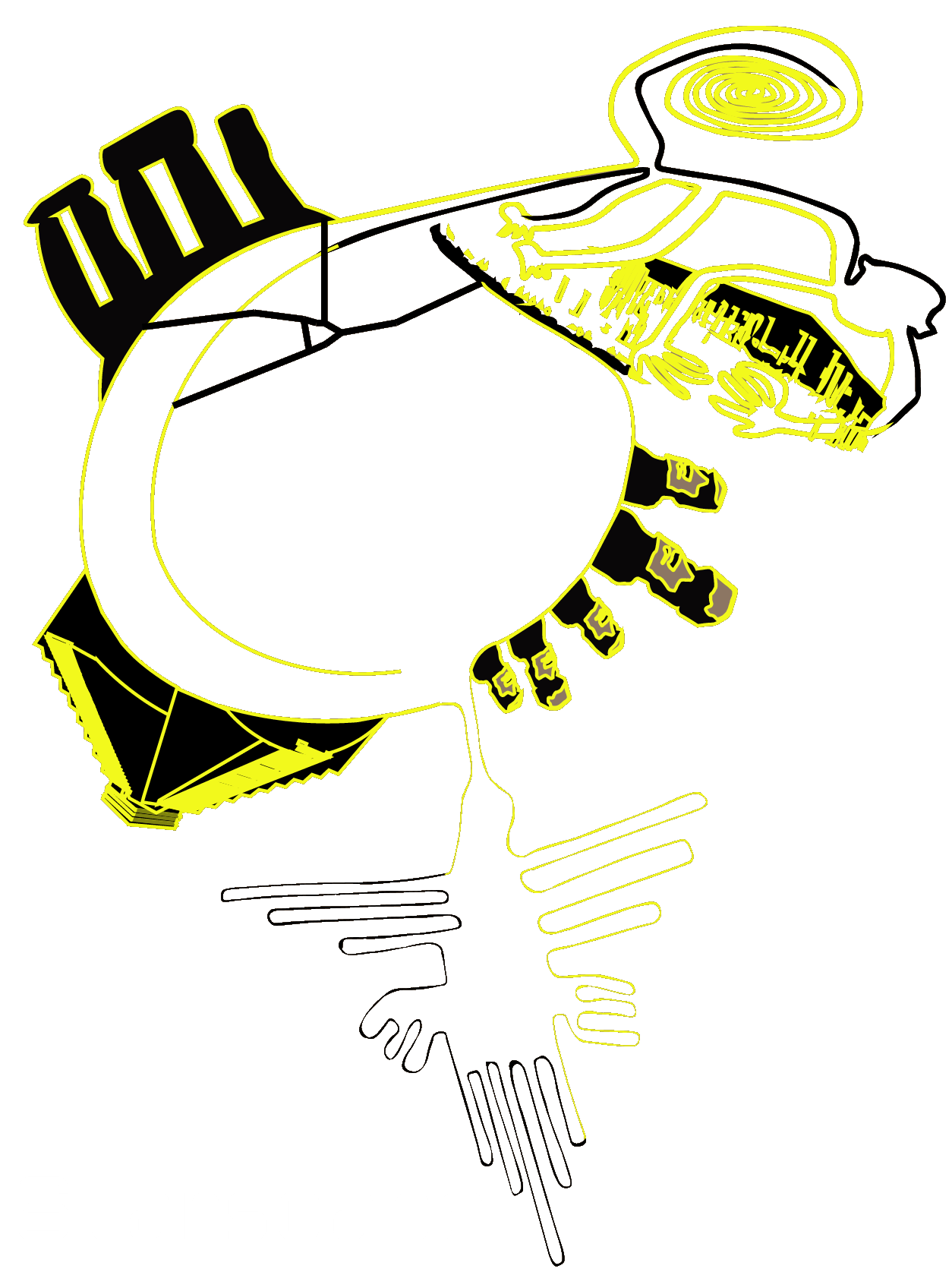Following our solstice experience, in Egypt we decided to plan our next astronomical alignment event. Given the dates (during term time for me – hence limited availability due to teaching duties) we decided on an extended weekend break between 18-20 March in Malta. The island is home to mysterious megalithic structures, including Mnajdra, Ggantija, and Tarxien. What is great about these is that Malta Heritage organizes public events during the solstices and equinoxes to allow visitors to experience the well-researched astronomical alignments. And we are not talking here about Ancient Apocalypse type of biased research but peer-reviewed articles including research spanning decades.
Price for 2 PAX 3 nights (1 in Luton and 2 in Malta), super off-peak train tickets from Nottingham to Luton (£118), plane tickets with Ryanair and just our backpacks (£101), hotels (£168), tickets to equinox event (£53): £440. To these, we added about £174 split as follows:
- bus tickets to/from the train station in Nottingham (£8)
- buses in Malta (£27 for 2 x 12 trips including transfers; we have used about half in 3 days so plenty left for the next visit as the card is valid for 1 year)
- ferry to Gozo Island (£8)
- Uber in Malta – yes Malta has Uber now! (£23 for getting us to Mnajdra from our host on the equinox morning at 5 am avoiding a 1h walk)
- entry tickets to various archaeological sites (£38)
- and meals including supermarkets (£70).
Despite our low-cost approach perhaps we could have perhaps shaved off about £80 but overall it seems that this is the cheapest you can get for a 2-person weekend break traveling from a very expensive country to a not-so-expensive one.
Getting there and first impression
As our flight was at 6 am and we hate taking night buses/trains as you get little rest on them we decided to spend the night before in a hotel in Luton. The train from Nottingham departed a little after 7 am. Everything went smoothly, with no delays and we reached our temporary destination (Holiday Inn) around 10 pm. After a night there we passed the security checkpoint at Luton Airport at about 5 am on March 18. The flight to Malta takes a little bit over 3 hours and longer when returning (!). In comparison, it takes less than 3 hours to fly to Timisoara in Romania which in a straight line is about 400 km closer. But planes don’t fly in a straight line, they avoid open seas and follow international flight corridors instead. Just before arrival, Marc got a peak at Mt. Etna covered in snow. The magnificent volcano is just 215 km north of Malta. By the way, Malta is not a volcanic island, but rather a result of sedimentary processes. On arrival, we quickly passed security and went outside to find some coffee and buy our public transport cards. You can get them in front of the Flight Departures terminal. Busses are frequent in Malta and are rather cheap. Just smile and wave and they will stop.
Malta is in the EU but is a small country relying mostly on tourism. You can see that in the buildings as many require restoring. Roads are generally ok, although lots of trash can be seen especially around Valletta (same in the UK), there are no forests or mountains and the architecture is typical of the sunny Mediterranean. The people are friendly and you do not feel unsafe walking alone, even in the countryside.
Temples and getting around
Instead of heading to our accommodation (room with a shared bathroom in a private house), we decided to spend the afternoon visiting the National Museum of Archaeology, a bit of Valletta, and the Tarxien temples. All by bus as they are frequent and comfortable so we took the first one from the airport to the Valletta main bus station. A 40-minute ride in a crowded bus.
The museum is in an old building and has not been renovated in a while. The exhibits and information are enough to get you started in your adventure on the Maltese islands providing the need-to-know information on sites and history from the Paleolithic to the Bronze age. It was there we discovered that the temples had a roof, although it is unclear what it was made of. Some argue that the composition of the monoliths does not support anything else than wooden beams and roofs.
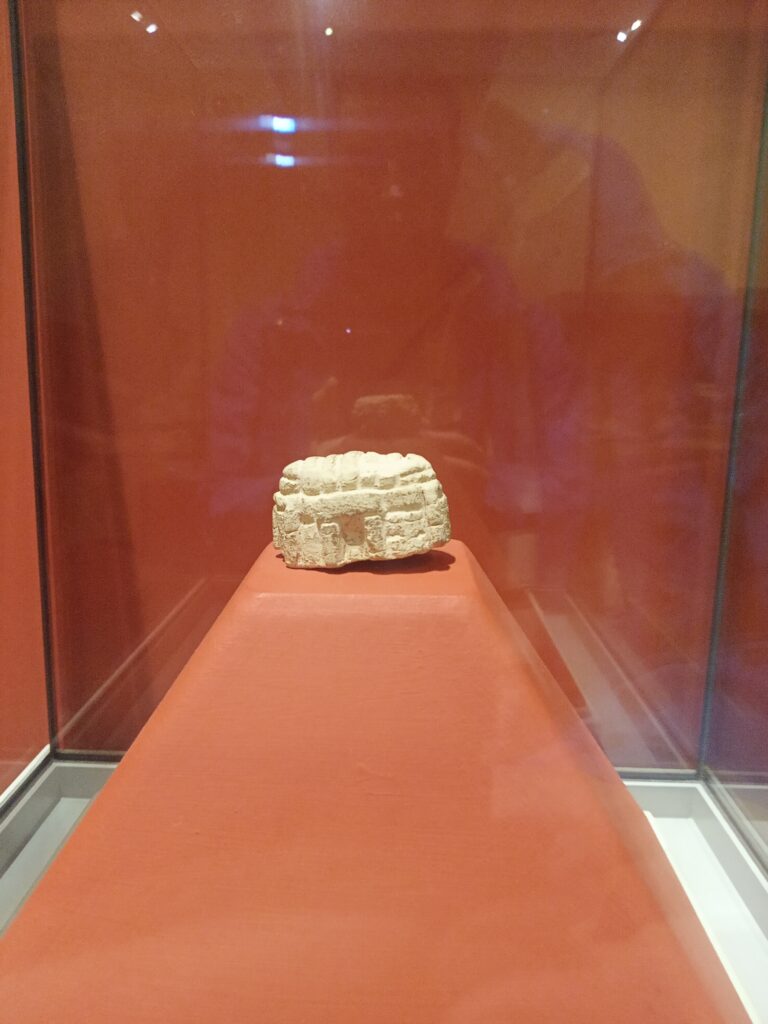
I believe we spent about an hour there before going to the seaside for a short sunbath (we lack that in the UK) and a quick snack. From there we took the bus to the Tarxien temples.
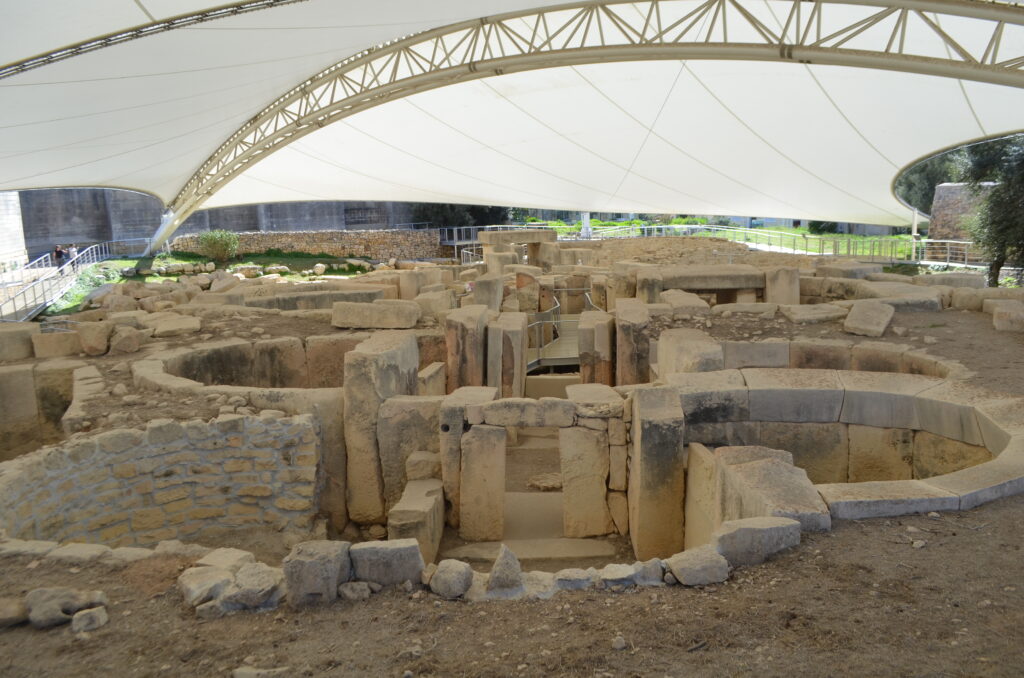
The temples are amazing and are currently covered to protect them from the elements. It is the same kind of protective structure you see in other sites such as Göbekli Tepe in Turkey. You can walk on the footpath and spend as much time and take as many pictures as you want. We didn’t see many tourists there and we enjoyed our stay, including the rabbits! Simina wouldn’t leave at the sight of the 2 furry residents.
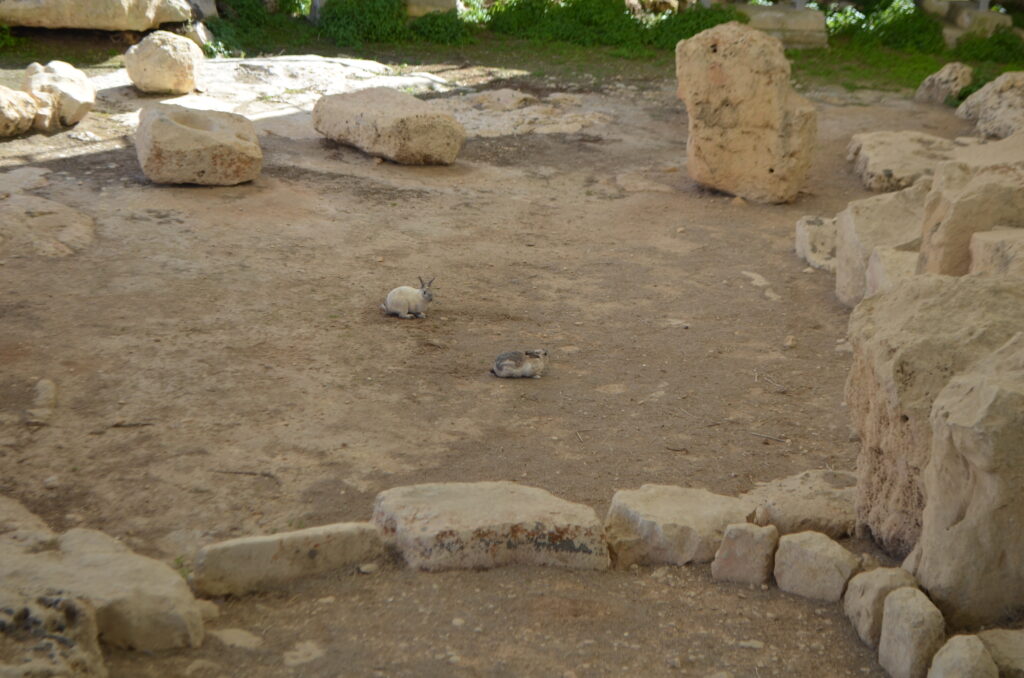
During our visits, we appreciate finding hidden gems, especially rock art and rock carvings. To our surprise, these are present to some extent in Malta as well. Can you spot the bulls in the image below?
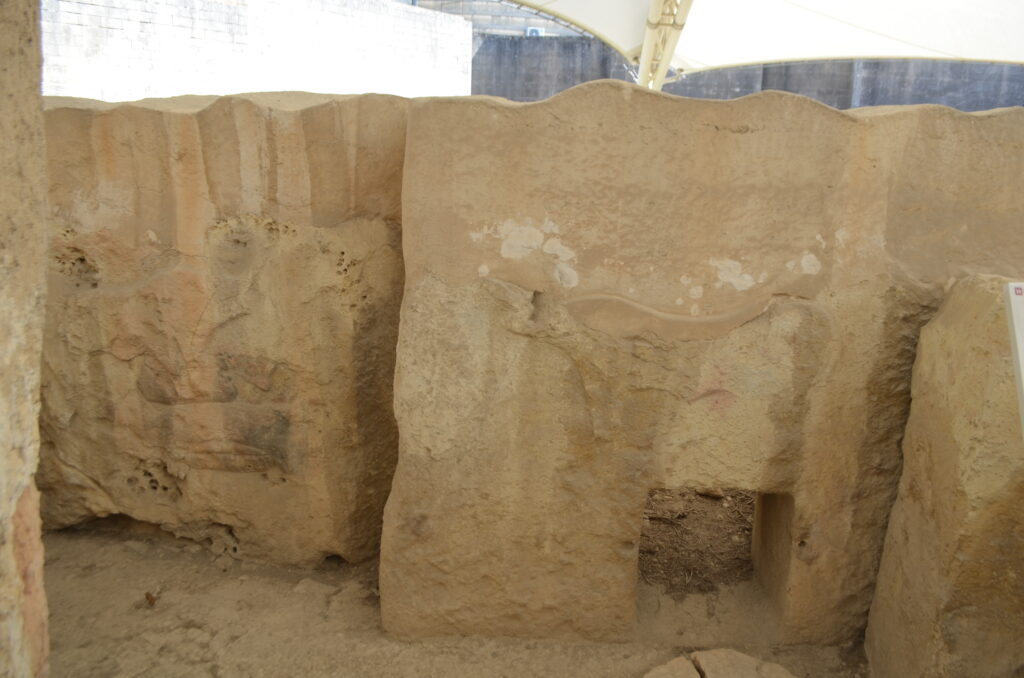
After Tarxien we wanted to visit the Hypogeum, the underground burial cave system we found out about at the museum, but we were told that we need a reservation for it. A few tickets were available for the next day but we planned our trip to Ggantija then. Being late we decided to head for our accommodation south of the airport. We picked the location due to its proximity to the Mnajdra temples, our target for the equinox. On our way, we did some shopping at a Lidl store (a lot of pasta but little beer variety – although Marc found some decent wheat unfiltered beer).
Back at the accommodation, we discussed a bit about how the museum depicts the island as isolated and almost impossible to get to by ancient means of transport (the prehistoric people sailed mostly following the coastline to avoid the rough sea) but somehow about 10,000 people (or their ancestors) managed to get there and create the mysterious temples aligned with the Sun and stars. Funnier is that the museum states that it would have been almost impossible even for people from nearby Sicily to get there in Neolithic times. Malta is isolated and cannot be easily seen from its closest island. According to scientific studies (Fogli et al., 2015), the land bridge between the two islands was still present about 14,400 years ago but gradually disappeared into the rising seas by 12,600 years ago (Late Paleolithic). By comparison, the Earliest temples constructed by humankind date from around 11,500 years ago in Turkey at Göbekli Tepe. The most recent significant land loss happened about 8800 years ago in the north and east of the island, two millennia before the earliest radion carbon-dated materials attributed to humans on the island (7000 years ago).
The following day woke up later at about 8 am and headed to Gozo Island to visit Ggantija, made of gigantic stones or so we were told at the Museum and by Graham Hancock in its Ancient Apocalypse documentary. The bus ride to the ferry takes about 2 hours. We took Bus 71 followed by Bus 41. Once there you board the next one leaving and must wait for 15-30 minutes before it departs. We paid for our return tickets on our way back from Gozo. The trip takes a little under 30 minutes and once there you have to wait for the next bus (Bus 322) to Ggantija. The closest stop to the site is Imqades and the bus trip takes about 30 minutes.
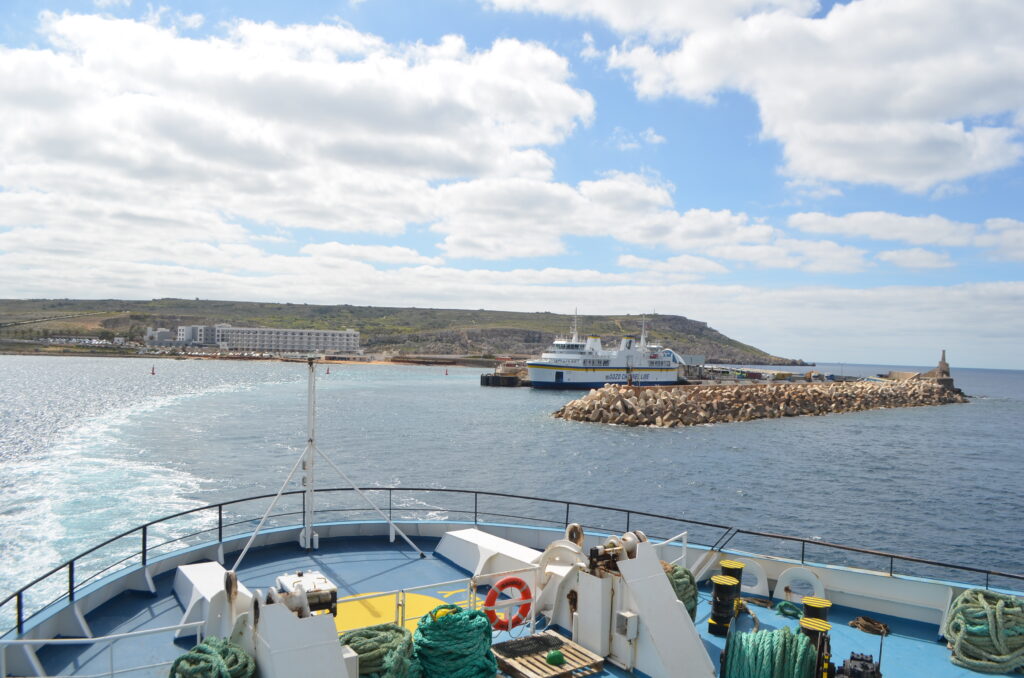
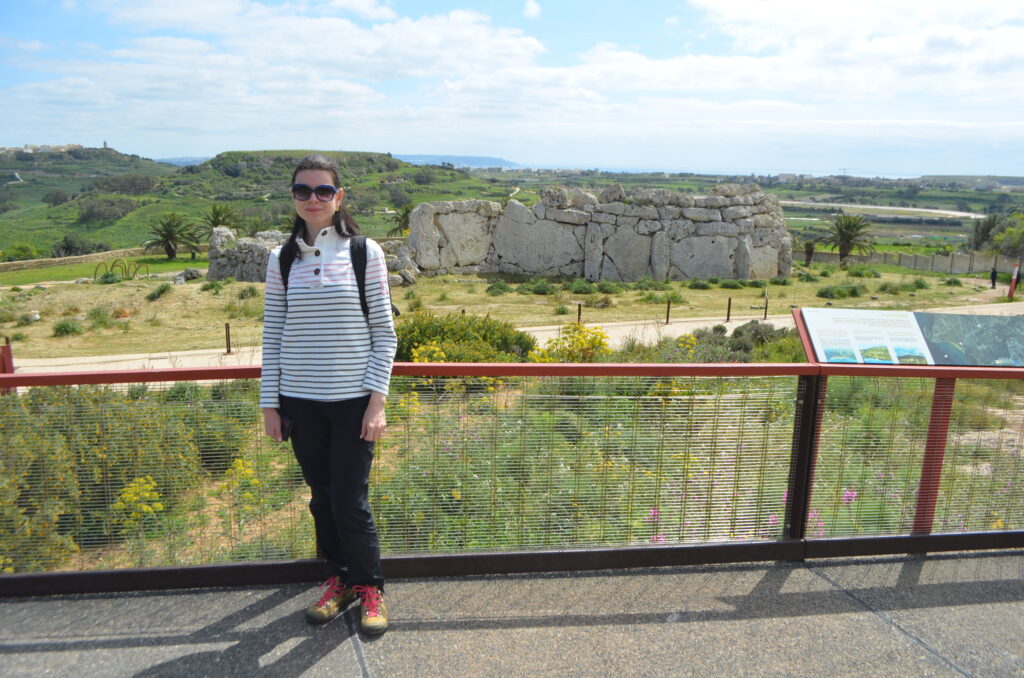
Ggantija is a wonderful site, although you can say I expected it to be bigger. Don’t get us wrong, the monoliths are huge, but based on the fuss Graham Hancock makes about them you would expect something else.
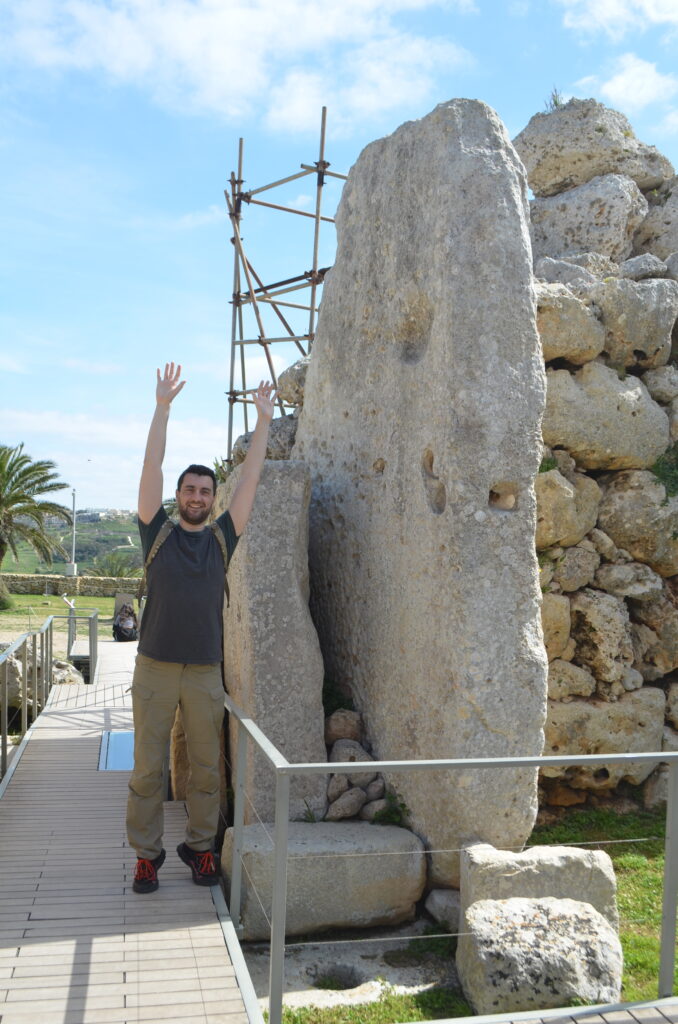
While the Ggantija ticket also lets you visit another nearby site (we forgot its name) we decided instead to have lunch in the town plaza (great pasta and seafood at the Latini restaurant nearby) missing the bus and having to walk over one hour to get back to the ferry. It was a great opportunity to burn some calories and see the countryside although Simina was scared of dogs barking in the distance.
The road back was lengthy. Due to horrific traffic, the bus took about 3 hours to get back to Valletta. Although we planned on seeing other objectives during the evening we were so tired we decided to get back to our place. Bottom line, if you decide to visit Gozo and Ggantija, don’t make any other plans for the day. Around 7 pm we were back at the accommodation getting ready for a few hours of sleep ahead of our visit at 5 am to the Mnajdra and Hajar Qin temples at the equinox. The forecast was not promising…
The Equinox
The scheduled Uber driver was at our doorstep early. The fare price was astronomical: £25 euros for a 5 km (9-minute drive) trip. Admittedly it was 5 am but nonetheless. Too bad the first busses don’t start until later in the morning otherwise we could have caught one.
Unfortunately, the sky was covered in clouds with NO chance of seeing any Sun let alone the sun rays touching the Mnajdra prehistoric megalith. We waited for about 20 minutes before the guide let the group in. We were 30 people there waiting for a coffee and snack before visiting the site at dawn. The sites are impressive and worthwhile seeing especially given how the mysterious builders incorporated the movement of the stars and Sun creating calendars and probably rituals. A good book on the subject written by Tore Lomsdalen can be bought at the Tarxien temple visitor center for 25 EUR although you can get it cheaper on Amazon UK. Marc decided to buy another book on the Maltese temples and sites instead. Tore has researched the sites and did his MA in Cultural Astronomy and Astrology from the University of Wales Trinity Saint David. He met him once during one of the Conferences of the European Society for Astronomy in Culture (SEAC). It was back in 2016 or 2017.
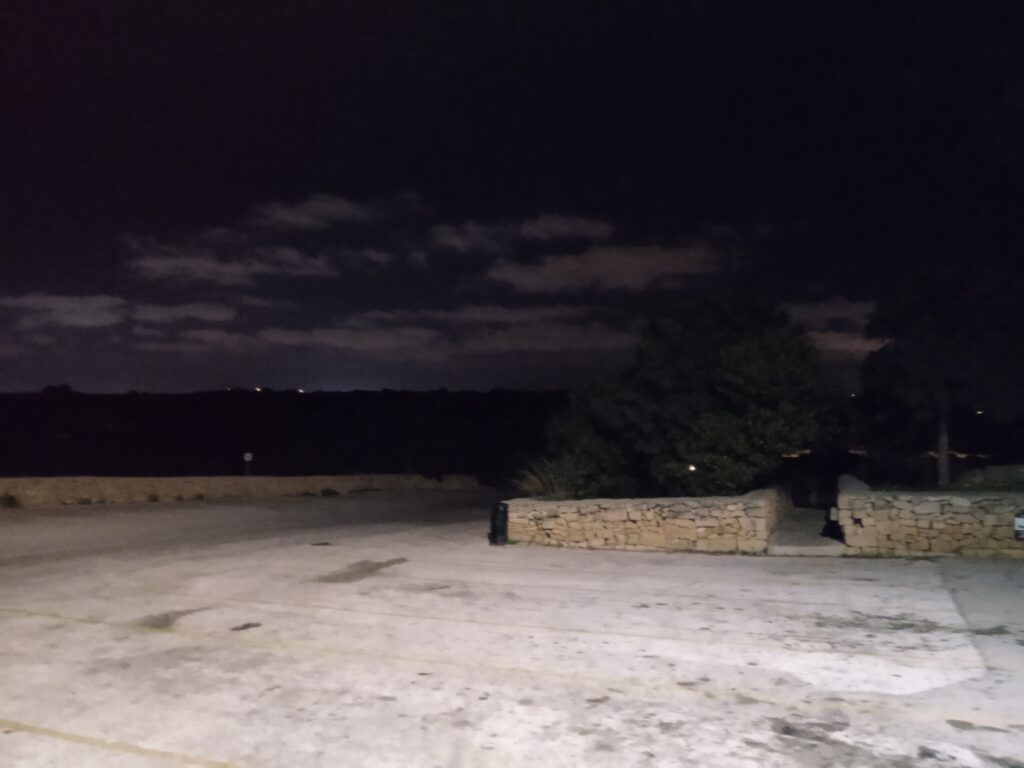
The Malta astronomical experience is spartan. No dramatic music and show (like in Karnak Egypt), no simulated light show (like in Maeshowe on Orkney Islands), no huge crowd (like at Stonehenge), no lottery (like at Newgrange). Just 30 people were guided through the sites and patiently waited for the Sun. This is something to be expected at the end of the rainy season, and it has happened to us repeatedly at Parta Romania where we missed three consecutive equinox sunrises due to bad weather before finally getting some Sun. When hunting alignments on the horizon it is always best to check the forecast 100 km to the east in the direction of the sunrise and not locally. It can be clear skies above but cloudy on the horizon.
The guide walked us through the basics and explained the phenomena at Mnajdra and Hajar Qim around equinoxes and solstices. Needless to say, Mnajdra is a site to be visited on all 4 occasions although the best chances of sunny mornings are on the summer solstice and autumn equinox.
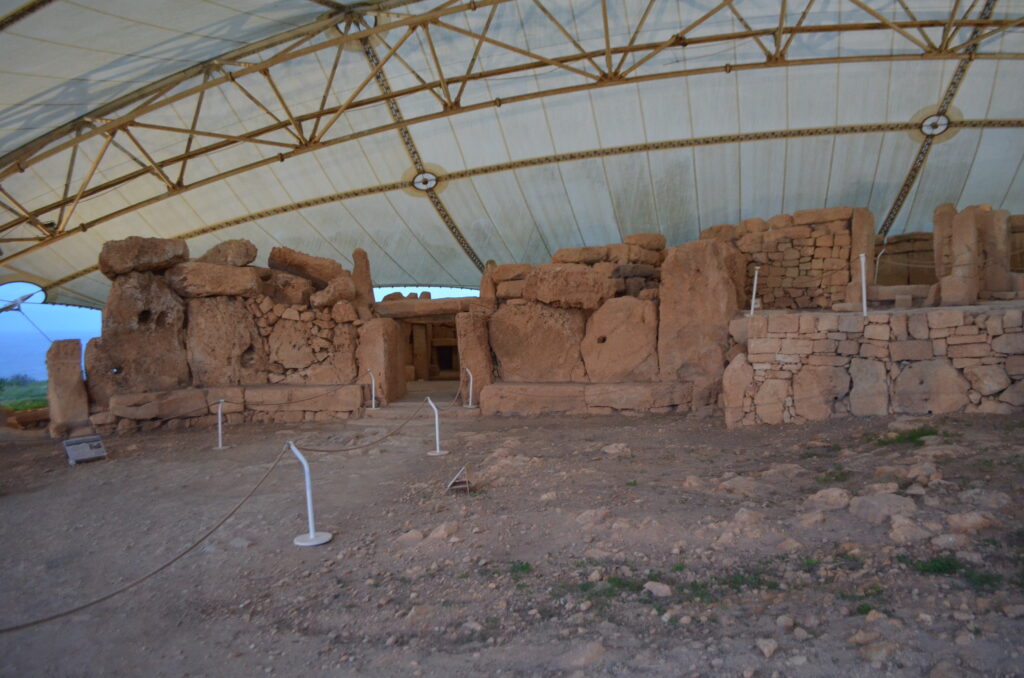
We learned that the East temple at Mnajdra has some strange markings interpreted as counting the days between the appearance of certain constellations. A nice article by Ventura et al. (1993) describes this in detail and recent work by Barratt (2022) expands the results. The guide told us that he believes them to be unfinished decorations (the image below has both) but at a closer look you can see that the intention and template are clearly different.
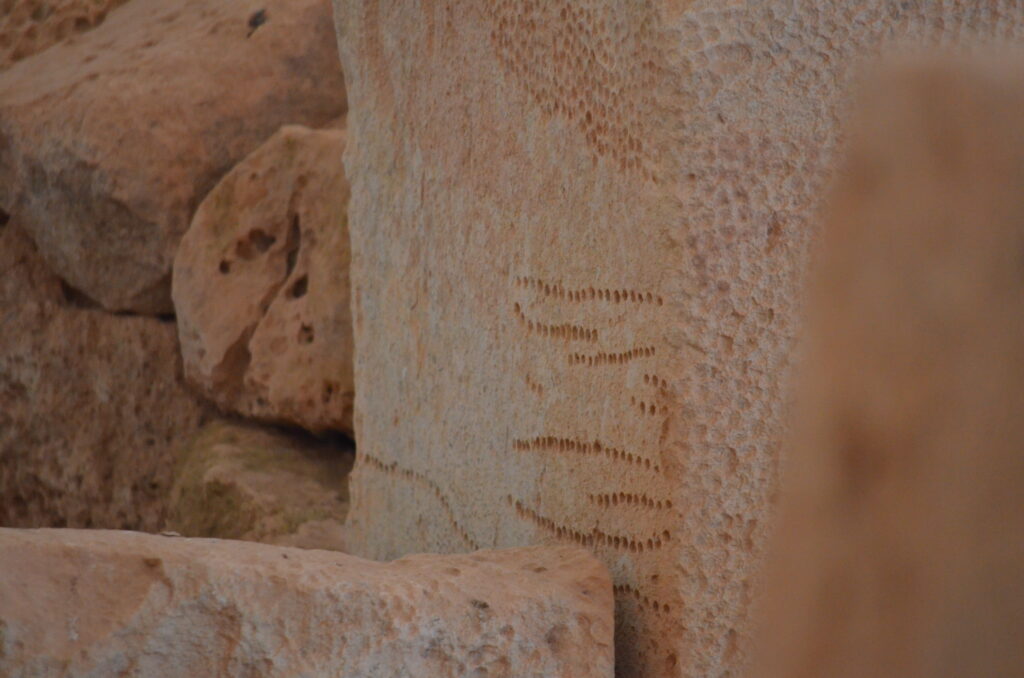
All was not for nothing. The experience of visiting the old stones is unique and the opportunities arising from the fact that they can be visited 4 times a year to witness the incredible astronomical alignments make you want to come back for a different experience each time. And that is what will do for this summer solstice! By looking at the chance of cloudy skies (the last 14 years of data for the summer solstice), we decided to pick Malta (again!) instead of Lepenski Vir in Serbia or Stonehenge in the UK for the next astronomical adventure.
In the meantime here is a simulated Equinox experience from the visitor center (sunlight included).
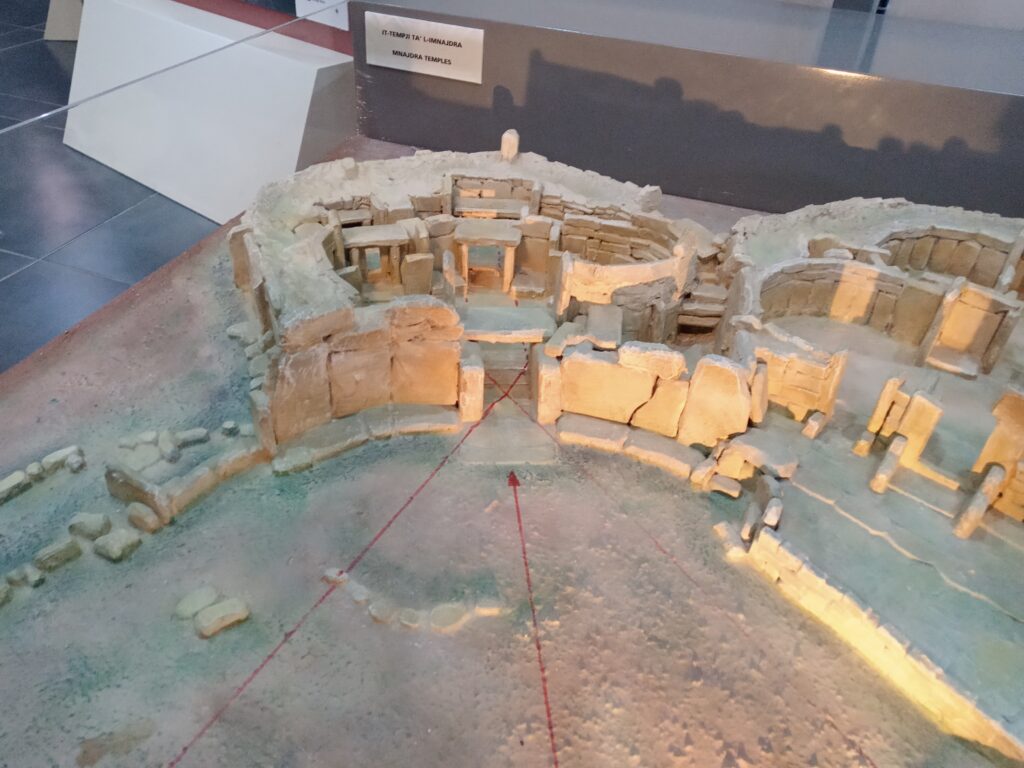
If you enjoyed this post consider following us on Facebook, Youtube, and Twitter or donating on Patreon. Also, stay tuned for public events Marc hosts regularly on Eventbrite.
